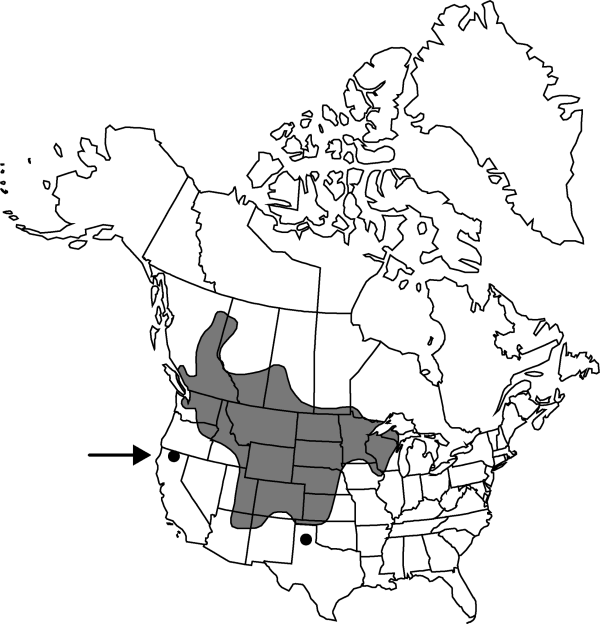Opuntia fragilis
Suppl. Pl. Succ., 82. 1819.
Shrubs, low, forming mats, 2–10 cm. Stem segments easily detached when terminal, dark green, subspheric to subcylindric, to flattened and elliptic obovate, (1.5–)2–5.5 × (1–)1.5–3 cm, low tuberculate (pronounced when dried), glabrous; areoles 3–5 per diagonal row across midstem segment, oval, 3 × 2.5 mm; wool white. Spines 3–8 per areole, in most areoles spreading, gray with brown tips, straight, ± acicular, terete, the longest 8–24 mm; depressed spines at base of areoles 0–3, 1–3 mm. Glochids in crescent at adaxial margin of areole, tan to brown, inconspicuous, to 3 mm. Flowers: inner tepals yellow, sometimes basally red, 20–26 mm; filaments white or red; anthers yellow; style white; stigma lobes green. Fruits tan, 10–30 × 8–15 mm, dry, glabrous; areoles 12–22, distal areoles bearing 1–6 short spines. Seeds tan to gray, flattened, warped, oblong to subcircular, 5–6 mm diam.; girdle protruding 1–1.5 mm. 2n = 66.
Phenology: Flowering summer (late Jun-early Jul).
Habitat: Barren areas in grasslands, woodlands, sandy or gravelly soils, on outcrops of granite, limestone, or quartzite
Elevation: 0-2400 m
Distribution

Alta., B.C., Man., Ont., Sask., Ariz., Calif., Colo., Idaho, Ill., Iowa, Kans., Mich., Minn., Mont., Nebr., N.Mex., N.Dak., Okla., Oreg., S.Dak., Tex., Utah, Wash., Wis., Wyo.
Discussion
Opuntia fragilis is a widespread, though inconspicuous, species; in many places, it flowers infrequently, if at all. Its easily detached stem segments are dispersed by animals and possibly water.
Selected References
None.